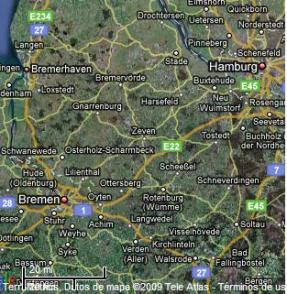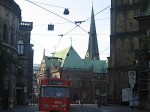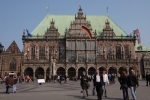| VUELO | FECHA | DE | A | SALIDA | LLEGADA |
| LH 4569 operado por: LUFTHANSA CITYLINE |
17. Abril |
BILBAO ES | STUTTGART DE STUTTGART AIRPORT
TERMINAL 1 |
12:45 h |
14:40 h |
| LH 149 operado por: LUFTHANSA CITYLINE |
17. Abril |
STUTTGART DE STUTTGART AIRPORT
TERMINAL 1 |
HAMBURG DE
TERMINAL 2 |
15:25 h |
16:35 h |
| LH 25 operado por: LUFTHANSA |
24. Abril |
HAMBURG DE
TERMINAL 2 |
FRANKFURT DE INTL
TERMINAL 1 |
18:45 h |
19:50 h |
| LH 4504 operado por: LUFTHANSA |
24. Abril |
FRANKFURT DE INTL
TERMINAL 1 |
BILBAO ES |
21:10 h |
23:15 h |
HORARIO DE VUELOS
Posted in DIARIO
PARTE HARTZAILEAK
| ALUMNOS INTERCAMBIO ALEMANIA 09/10 | |
| IBON ARTEAGA | 1ºDPM |
| ENEKO SANPEDRO | 1ºDPM |
| ADRIAN ALONSO | 1ºDPM |
| ANDER MARTINEZ | 1ºSIRCA |
| IBAI PEREZ | 1ºCMM |
| SERGIO RODRIGUEZ | 1ºIEA |
| AINHOA IZARRA | 1ºGA |
| NEREA GALLASTEGUI | 1ºGA |
| ANER ZATON | 1ºASI |
Posted in DIARIO
AVISO
Gogoratu aireportuan goizeko 11:00tan!! Puntualak izan
Recordar, en el aeropuerto a las 11:00!! Ser puntuales
Documentación: DNI en vigor, tarjeta sanitaria europea y tarjeta joven europea.
Equipajes
Mochila de viaje: tamaño normal (mochila de libros)
- Una pieza de equipaje de mano que no sobrepase ni los 6 kgs. de peso ni las siguientes medidas: 50 x 40 x 25 cm. (La suma de sus tres medidas no superará los 115 cm.).
- Neceser (sin objetos punzantes: cortaúñas, cuchillas de afeitar, pinzas, tijeras y sin los elementos que estén en la bolsa transparente…)
- Muda de recambio
- Comida para ese día
- Pequeñas cantidades de líquidos. Tienen que ir en pequeños contenedores con una capacidad individual máxima de 100 ml. Cada pasajero tiene que empaquetar estos contenedores en una bolsa transparente de plástico con auto cierre de no más de un litro de capacidad máxima (bolsa aproximadamente de 20 X 20 cm.), para facilitar la inspección de estos productos en los controles de seguridad.
- Se consideran líquidos las siguientes sustancias:
- Agua y otras bebidas, sopas, jarabes.
- Perfumes.
- Gel de ducha o champú.
- Aerosoles.
- Cremas, lociones y aceites, incluida la pasta de dientes
- Espuma de afeitar, otras espumas y desodorantes
- Presenta todos los líquidos dentro de la bolsa citada, separadamente del equipaje de mano y colocarla en la bandeja proporcionada al efecto en los controles de seguridad, para su examen por parte de los empleados de seguridad.
- Sacar su ordenador portátil y cualquier otro dispositivo electrónico de dimensiones similares de sus fundas correspondientes, y colocarlos en la bandeja para que sean inspeccionados separadamente de dichas fundas en los controles de seguridad.
- Llevar los productos autorizados, incluidos los líquidos y sustancias relacionados en el apartado anterior, en las maletas que usted factura; las nuevas medidas sólo afectan al equipaje de mano.
- Llevar en su equipaje de mano medicinas, para su uso durante el viaje, presentándolos separadamente en los controles de seguridad, pero no dentro de la bolsa transparente.
Gogoratu
GOGORATU (HOJA RECORDATORIA)
1. DNI
2. DIRUA / DINERO
3. EKIPAJEA / EQUIPAJE (20 KILO)
4. ESKU EKIPAJEA / EQUIPAJE MANO (10 KILO) (Neceser, DNI, comida, muda)
5. OPARIAK / REGALOS FAMILIA (…..)
6. JANARIA / comida para el primer día
7. KUADERNOA, HIZTEGIA, BOLIGRAFOAK (Cuaderno, diccionario, bolígrafos..)
8. HOTZARAKO ERROPA EGOKIA / ROPA DE ABRIGO
9. PUNTUALAK IZAN / SER PUNTUALES
Typical German food
Pork, poultry and beef are the typically used meat in Germany. Of these three, pork is the one that is used the most. A typical German meal may consist of any of these meats. Poultry choices may include chicken, duck, goose and turkey and game meats such as boar, rabbit and venison are also highly popular meat choices. The meat is normally pot roasted and is very often eaten in the form of sausage. There are approximately 1500 various types of sausages in Germany.
A typical German breakfast may include bread, toast or rolls with jam, marmalade or honey as well as eggs and strong coffee or tea. Ham and salami are typically eaten with breakfast in Germany as well as a variety of cheeses and leberwurst or liver-sausage is a commonly found breakfast food.
Common freshwater fish found in Germany include trout, pike, carp and European perch. Seafood was originally restricted to the areas located on the northern coastline; however, today seafood dishes such as sardines, tuna and salmon are highly popular throughout all of Germany.
Vegetables are also a commonly prepared food in Germany. They are typically eaten in stews or soups but are often served as side dishes. Carrots, turnips and cabbage are among the most commonly prepared vegetables as are fried onions.
Side dishes, such as noodles which contain egg yolk, as well as potatoes and dumplings or Knodel are highly popular particularly in the southern regions of Germany. Potatoes are typically served boiled in salt water, however mashed and fried potatoes are traditional fares and french fries have become very popular in the region.
For preparing these traditional and delicious foods, a variety of spices are used. The most commonly found spices are mustard, horseradish, and garlic. With the exception of mustard for sausages, German cuisine is generally hot and spicy. The most traditional and popular her choices include parsley, thyme, laurel, chives and black pepper. Juniper berries, caraway, cardamom, aniseed and cinnamon are also used frequently in dishes, beverages and desserts. Other herbs and spices such as basil, sage, oregano and chili peppers have become popular as of late.
Expressions that you should know before going
|
Hola |
Adios |
Buenos días |
Buenas tardes |
Buenas noches |
|
Hallo |
Auf wiedersehen |
Guten morgen |
Guten abend |
Gute nacht |
|
Si |
No |
Por favor |
Gracias |
De nada |
disculpe |
|
Ja |
Nein |
Bitte/bitte schön |
Danke/danke schön |
Keine ursache/gern geschehen |
Entschuldigung |




